Thanksgiving dinner is over, so what do you do with the leftover carcass from your Thanksgiving turkey? Turkey Stock is the base of a great gravy, sauce, and stuffing. Make your own for robust flavor and maximum health benefits.
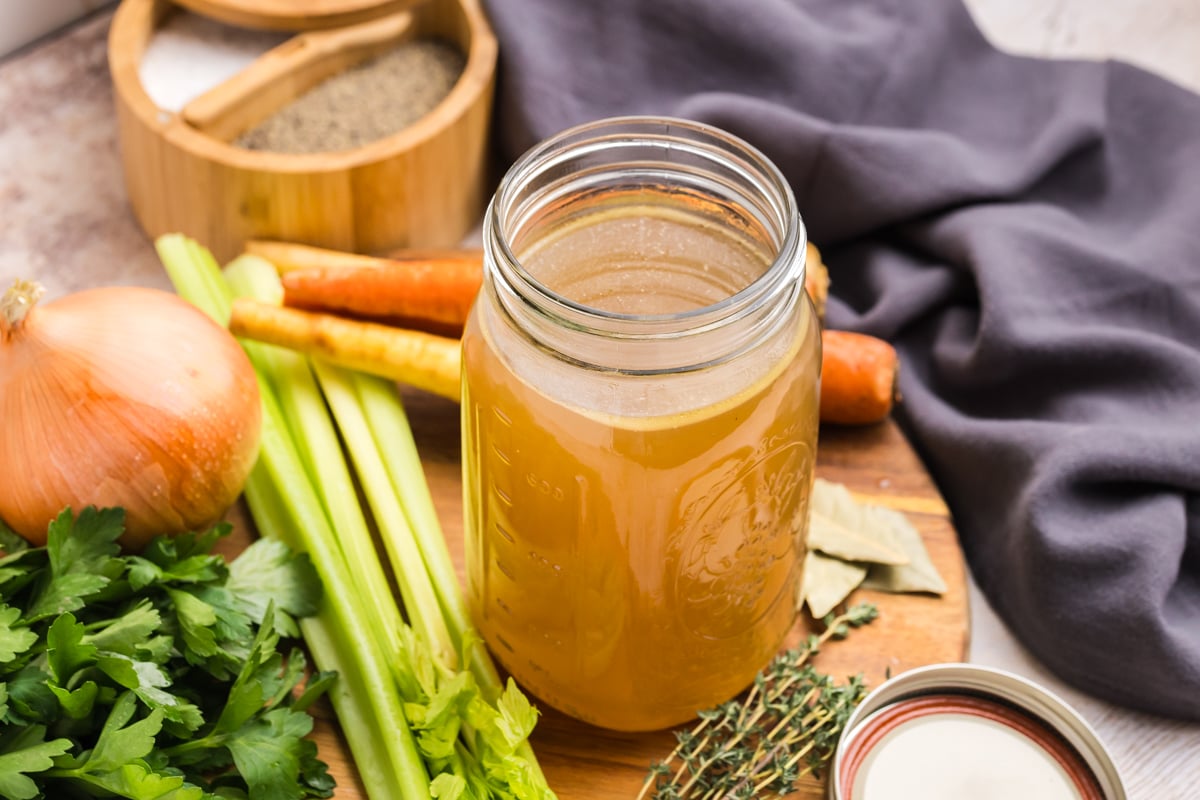
What Makes a Good Stock?
I decided to make a quick list of tips and tricks on how to make stock. Give it a read before tackling any turkey stock recipe.
The main elements we are aiming for are:
- Gel
- Flavor
- Clearer stock
Store-bought stock just won’t have these elements like a homemade one will. Primarily, the gel.
Premade stocks are watery and get most of their flavor from salt, not real ingredients.
Now don’t get me wrong, I still use store-bought sometimes. Even using bullion or concentrate because sometimes you just need a little or don’t have any homemade on hand.
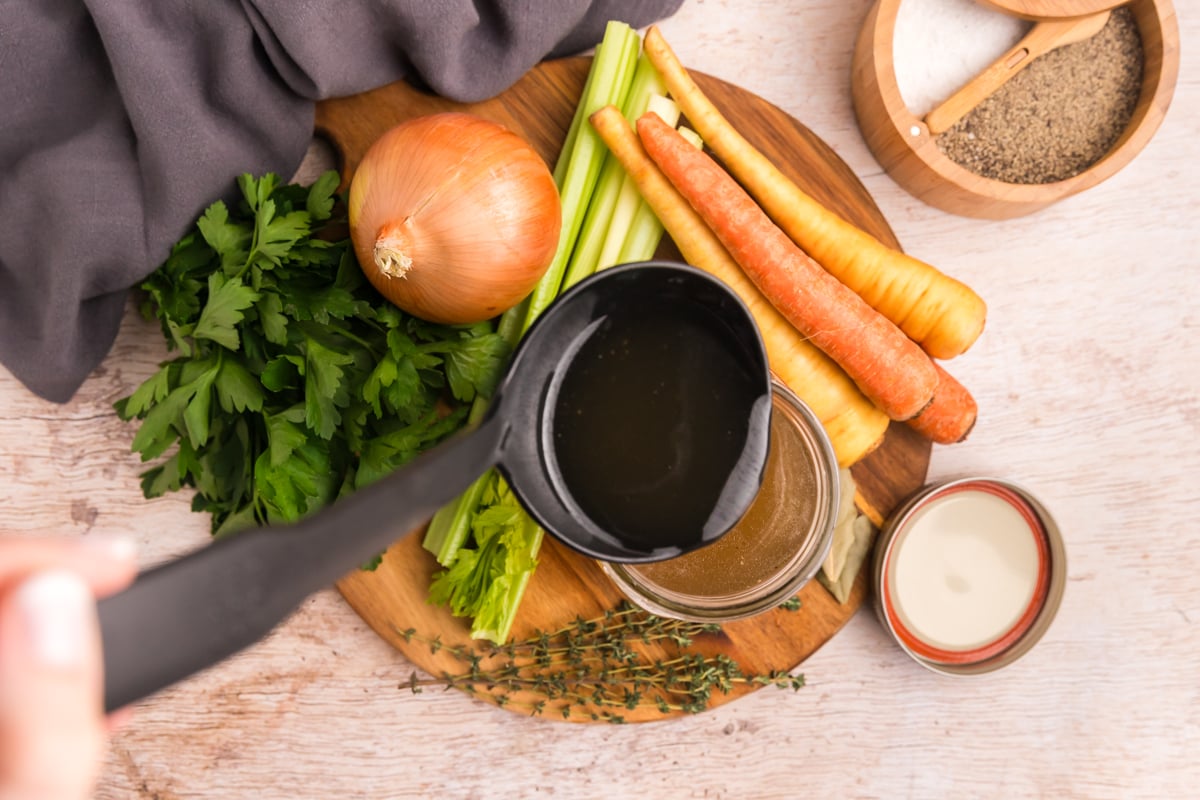
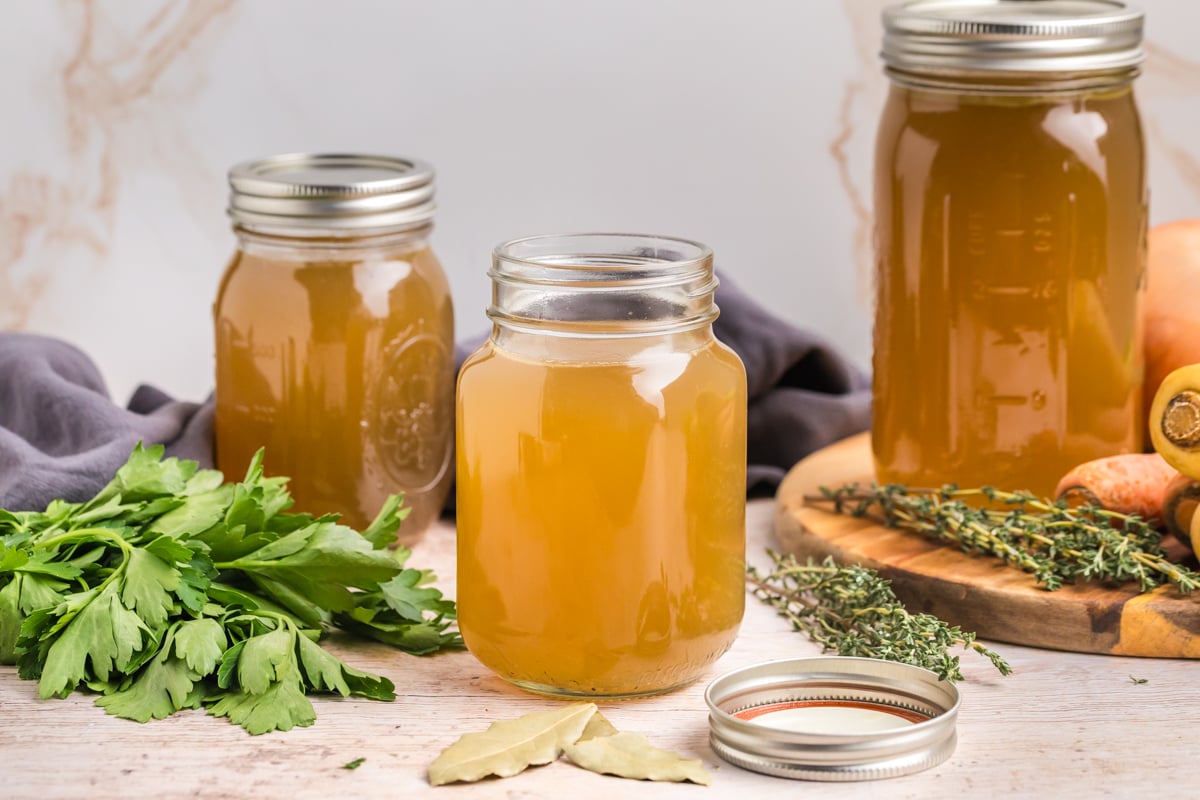
Ingredients
Grab these simple ingredients and get ready to make the best stock you’ve ever tasted with so much flavor.
- Turkey Carcass – Break the carcass into pieces so that all of it can fit in the pot. Remember that leaving a little meat on it can give it extra flavor.
- Medium Stalks Celery – Celery gives the stock a bit of earthy flavor.
- Large Carrot – Cut the carrots evenly into thirds. These a touch of sweetness to the stock, balancing out the other savory ingredients.
- Medium Yellow Onion – Onions also add sweetness and their own signature flavor.
- Bay Leaves – A bay leaf round out the stock with the herbal flavor they bring to the table.
- Whole Black Or White Peppercorns – Either of these will add the perfect gentle heat.
- Fresh Thyme – Thyme is a perfect pairing with poultry. I love adding fresh herbs to my turkey broth.
- Flat Leaf Parsley – Fresh parsley brightens up the stock and complements the aromatic vegetables.
- Parsnip – While these are optional, they do add a nutty flavor and a little extra sweetness.
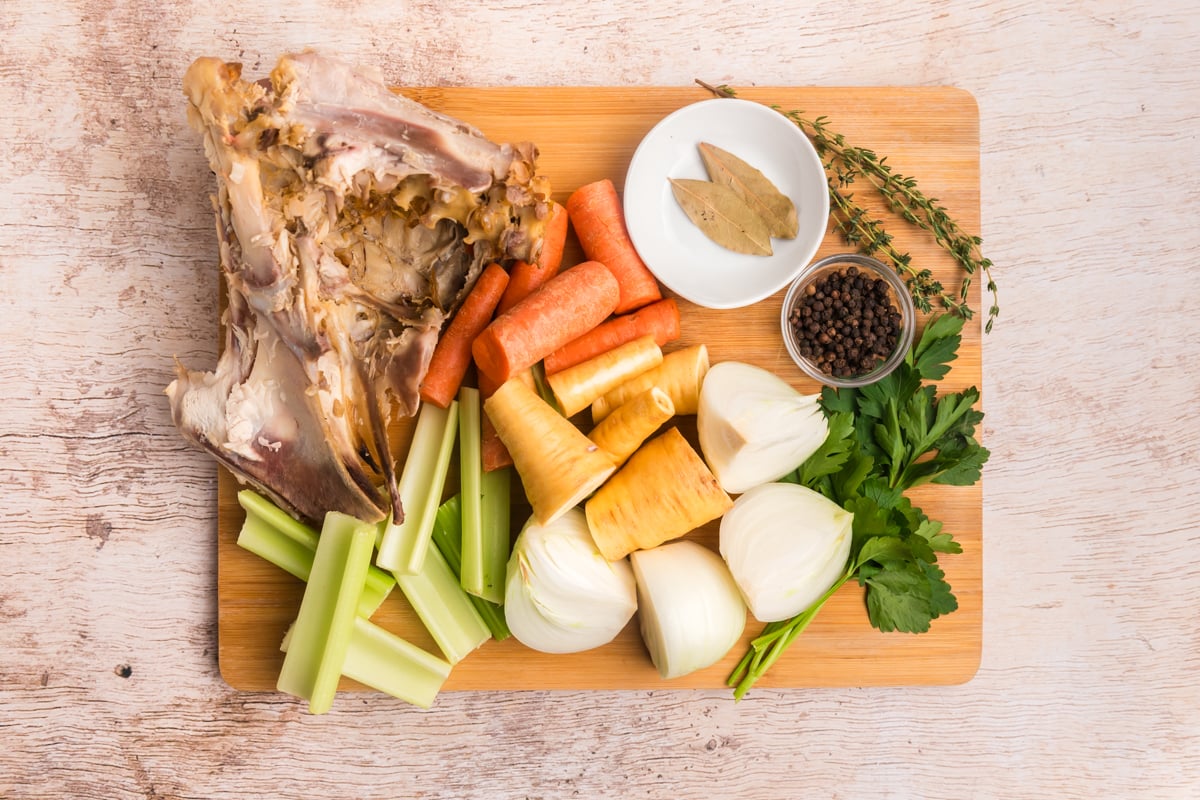
How to Make Turkey Stock
Sure you could buy store-bought stocks at the grocery store, but making your own stock is my favorite way to use leftover turkey bones.
- Prep the bones. Break up the leftover turkey carcass and place the bones in a large stock pot. Pour enough water over the bones to completely submerge them.
- Heat. Simmer the bones and water for several hours in a large pot, avoiding boiling. Occasionally skim off the frothiness on the top.
- Add remaining ingredients. Place the vegetables, herbs, and spices into the pot and continue to simmer.
- Strain. Pour the stock through a fine mesh strainer to remove the bones and vegetables.
- Cool. Allow the stock to come to room temperature before storing it in an airtight container and refrigerating.
- Remove fats and store. Once chilled, remove any solid fats that have risen to the top. Use the stock immediately or freeze.
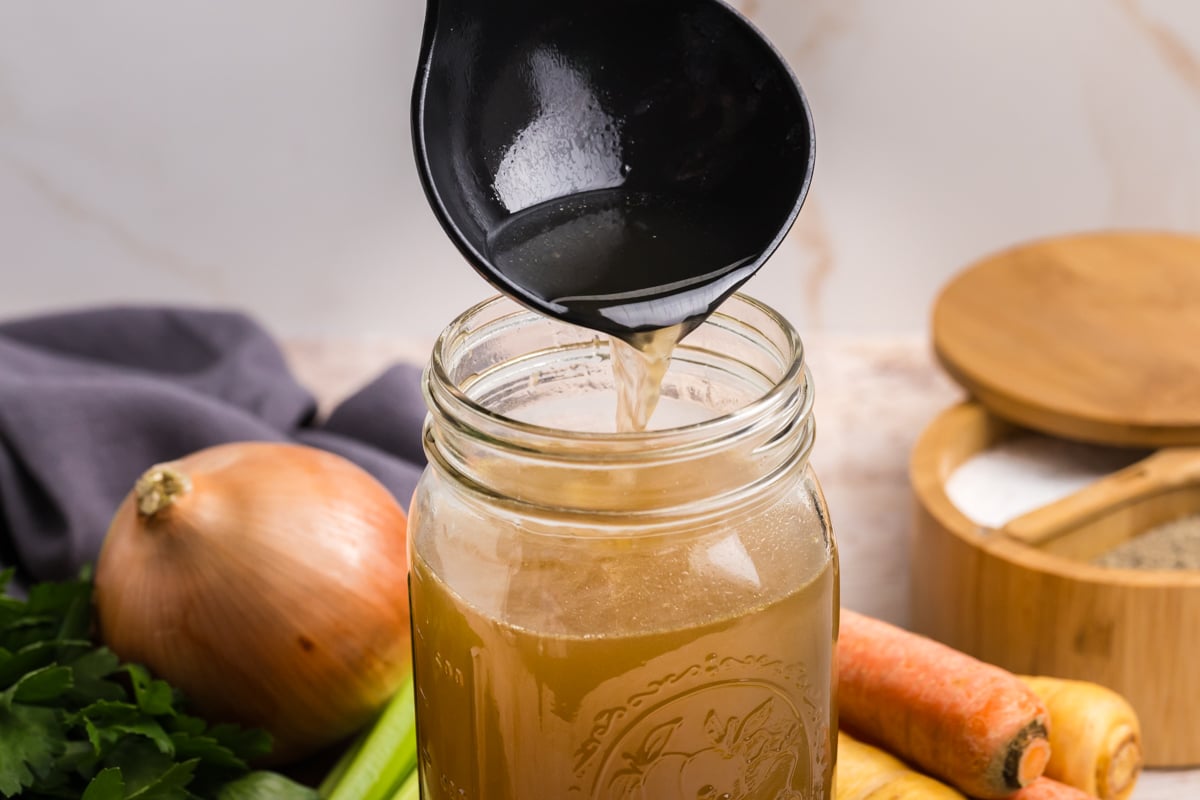
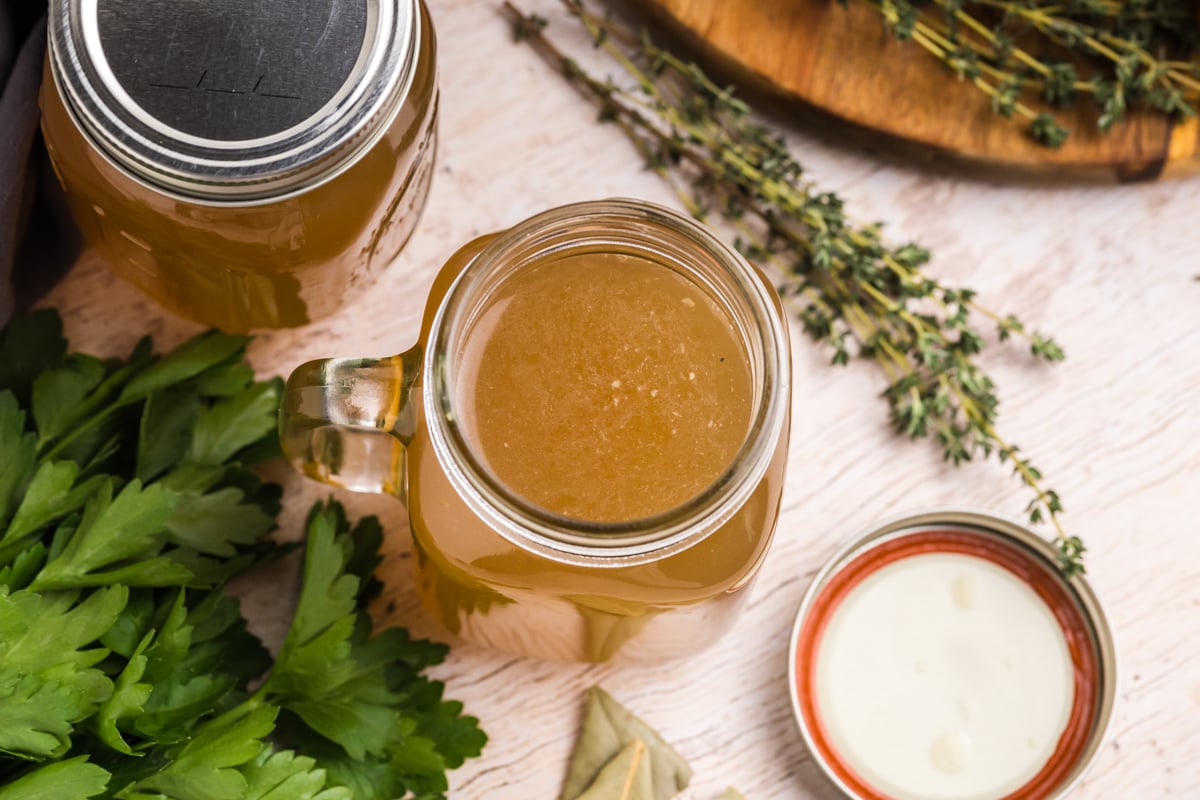
What to Make with Turkey Stock
This recipe can be made after preparing any turkey, but my Orange Thyme Turkey makes an extra special flavor! This batch went straight into my Turkey Noodle Soup, the perfect way to use up that leftover turkey!
Also use turkey stock to make turkey gravy, stuffing, or any sauce that calls for chicken stock or broth.
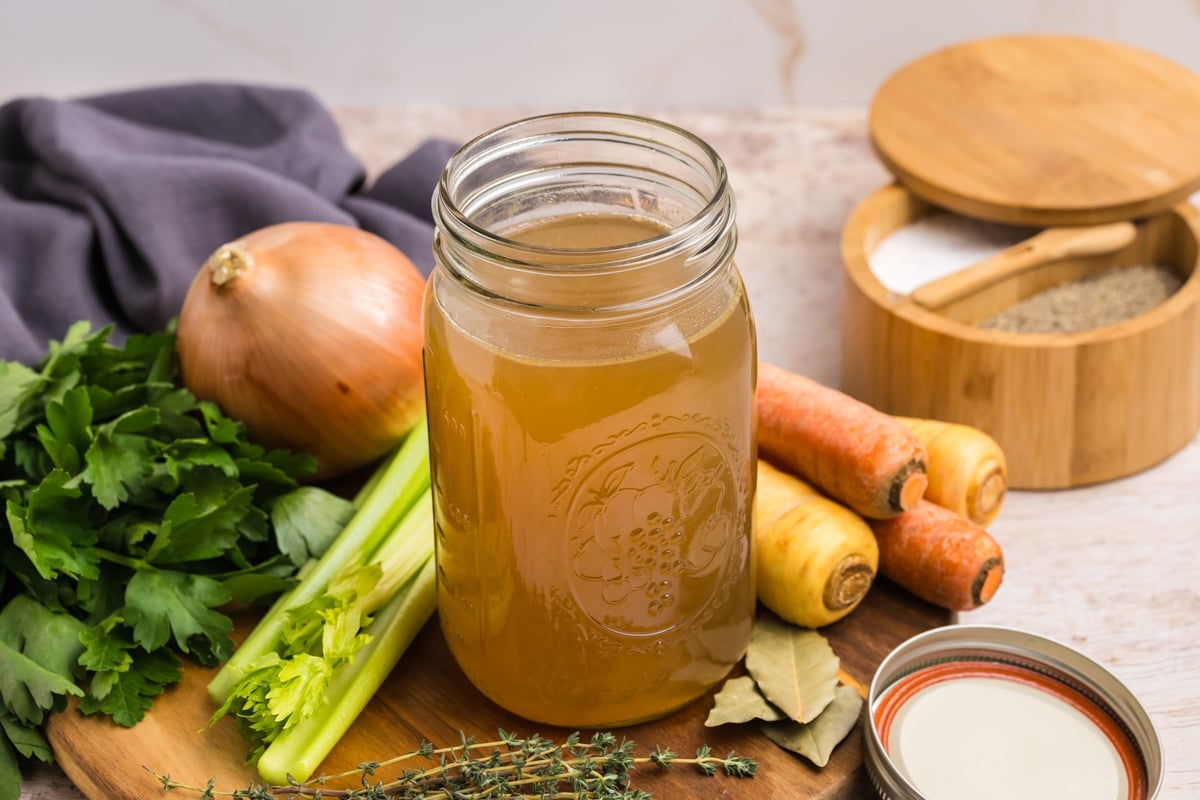
Storage and Freezing
How to Store Turkey Stock
Store this homemade turkey stock recipe in your favorite storage container or mason jars.
Can I Freeze Turkey Stock?
Generally, when making turkey stock, I make it in large batches and then freeze it in 2-cup increments. You can freeze stock in airtight plastic bags or other airtight containers.
I recommend double bagging them for extra protection, but then they can lie flat and take up little room in the freezer. You can also freeze the stock in an ice cube tray for smaller servings. Just take them out as you need them!
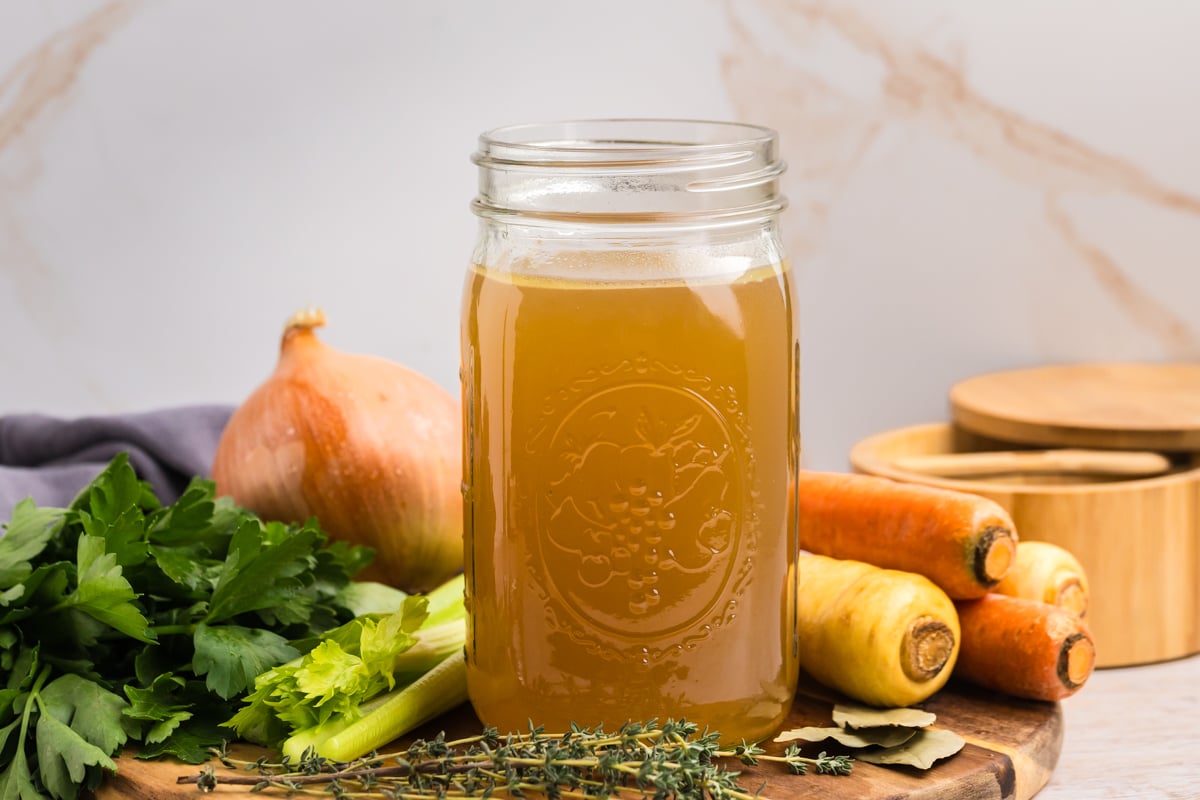
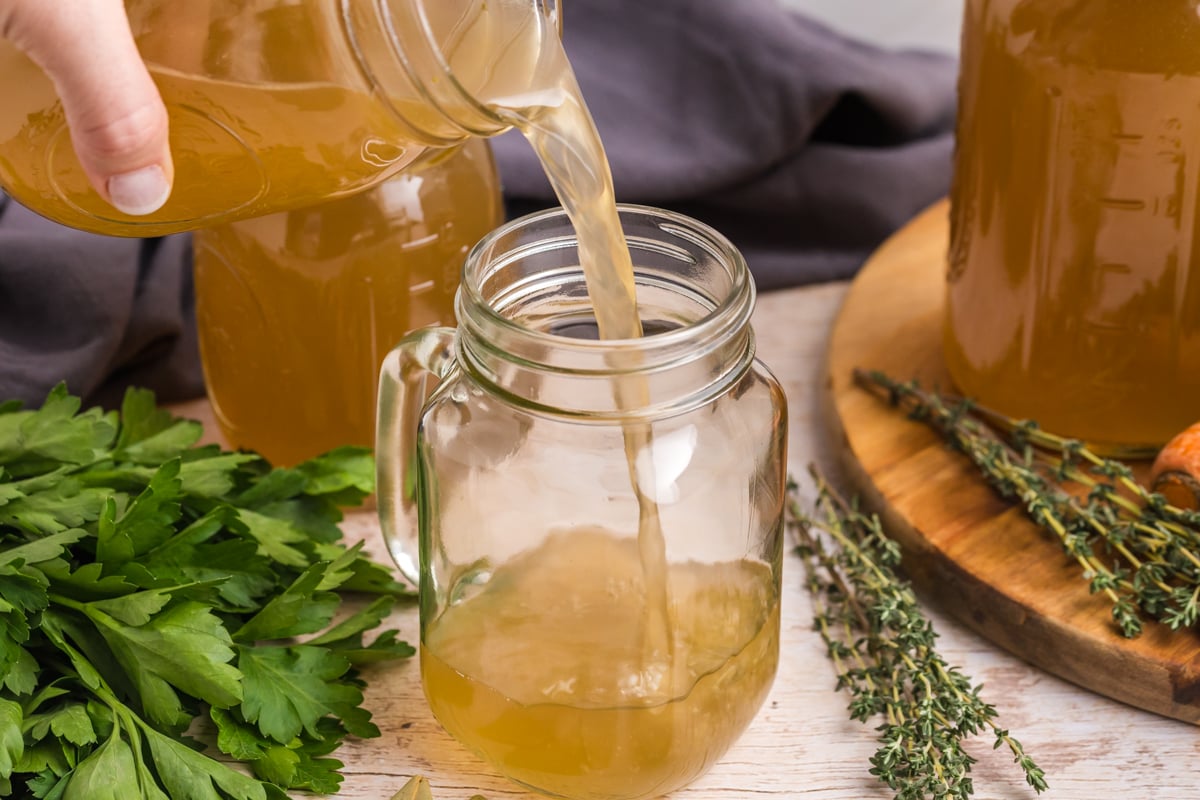
Recipes that Use Homemade Stock
Now that you have delicious turkey stock, what can you do with it? Here are some of our favorite recipes that use flavorful broth.
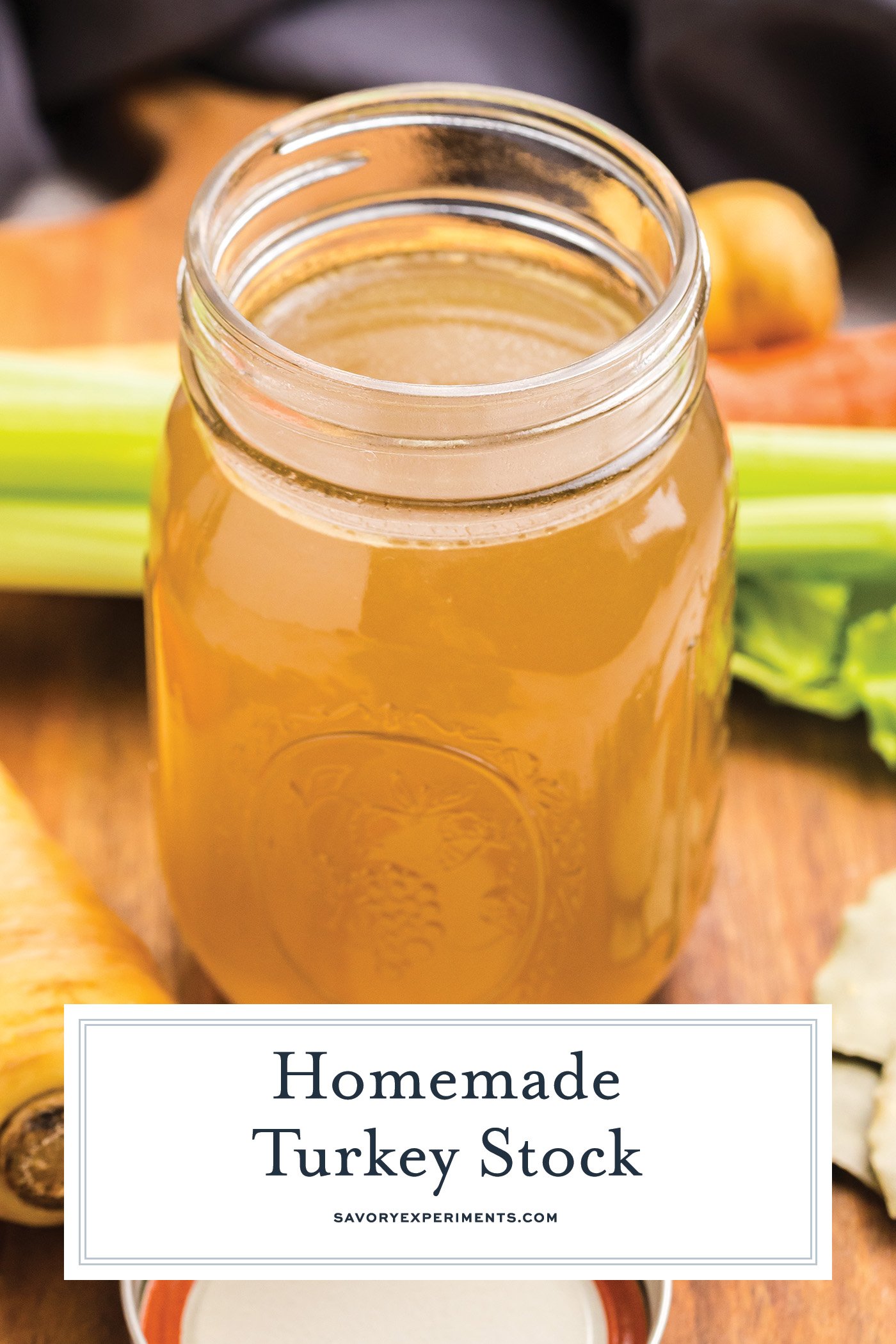
Turkey Stock
Equipment
Ingredients
- 1 turkey carcass broken into to pieces so it fits in the stockpot
- 2 medium stalks celery cut into thirds
- 1 large carrot cut into thirds
- 1 medium yellow onion quartered
- 2 bay leaves
- 1 tablespoon whole black or white peppercorns
- 3 sprigs fresh thyme
- 2-3 sprigs flat leaf parsley
- 1 parsnip cut into thirds (optional)
Instructions
- Add the turkey bones, uncleaned, into a large stock pot. Add enough cold water to cover the bones or a minimum of 2 quarts for every 1 pound of bones.
- Heat on low to a simmer for 2-3 hours. Refrain from stirring too much and skim any scum off the top periodically. Do not boil.
- Add the vegetables, herbs and spices and continue to simmer for 2-3 hours.
- Strain the stock through a fine mesh strainer into large heat proof containers. Let it cool, then refrigerate.
- Wait until solid fats (if there are any) solidify on top and then peel off the top layer. Freeze the broth or use immediately.
- If you've tried this recipe, come back and let us know how it was in the comments or star ratings.
Notes
Nutrition
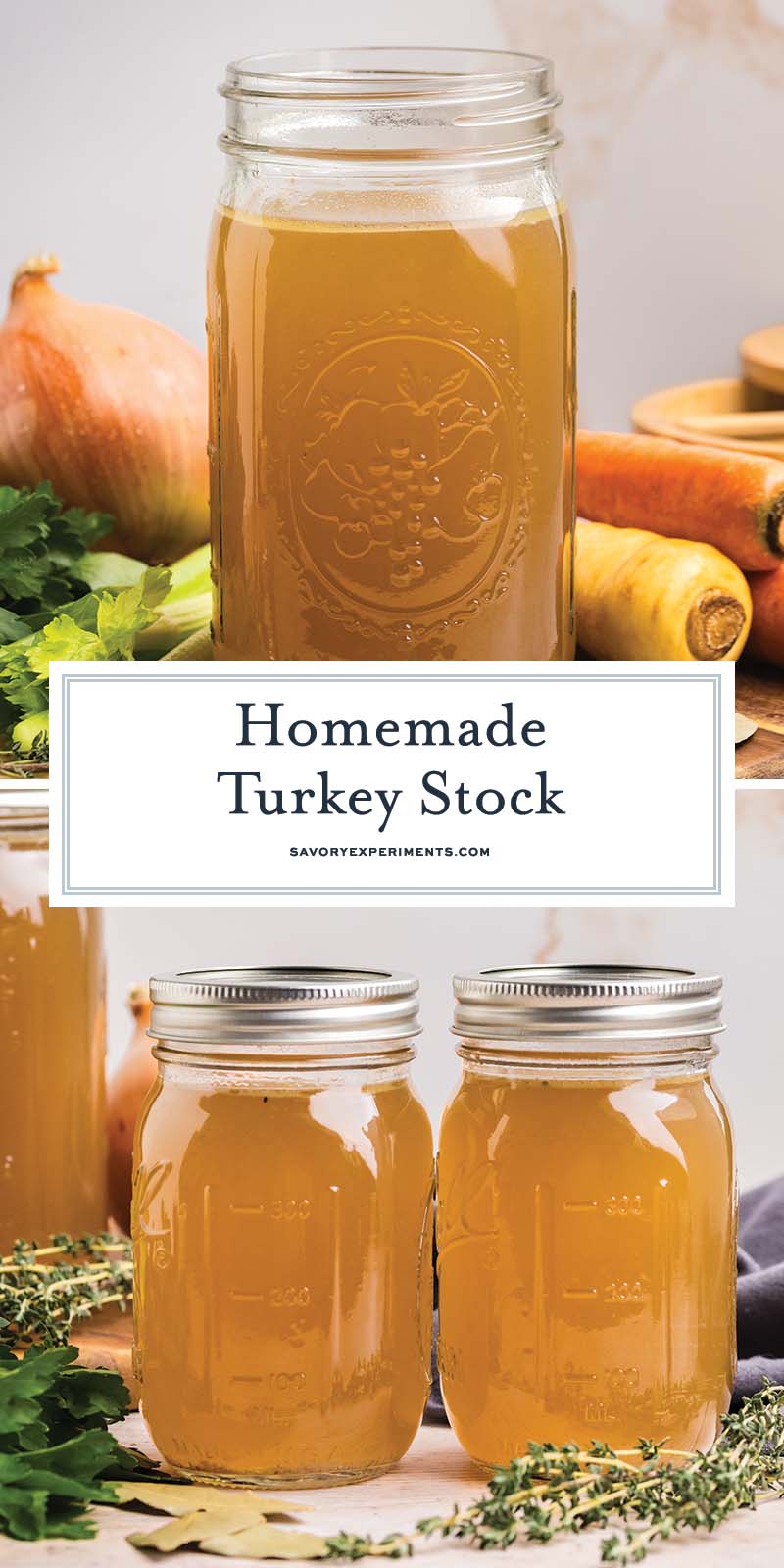
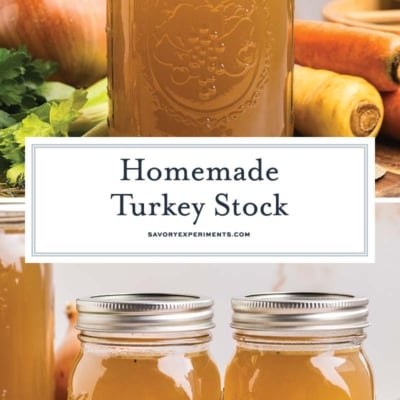



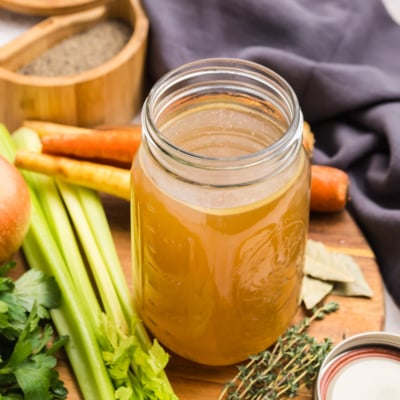




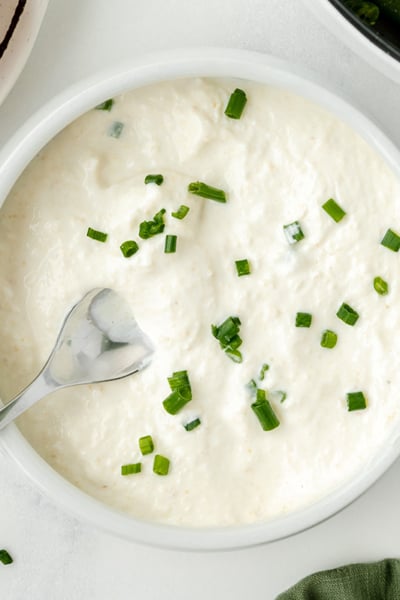





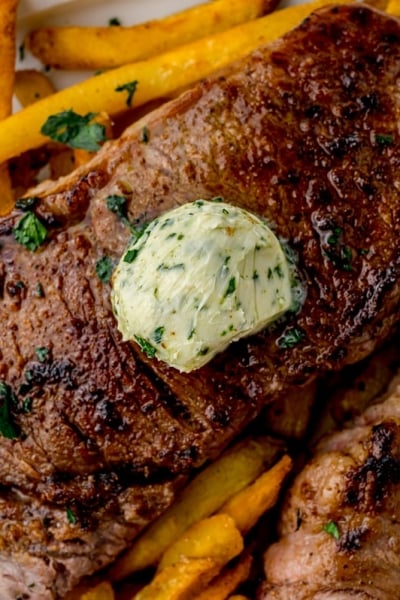







I had a turkey carcass in the freezer and was excited to make this recipe. The broth was so delicious and full of flavor, I can’t wait to make it again.
You seriously can’t beat homemade stock! This recipe is full of flavour and I appreciate all your helpful tips as well. Thanks!
Love this recipe, easy and delicious. Thanks for sharing
This homemade turkey stock was such a great base to soups this week. Easy to make following your recipe too.
This was such a simple and satisfying recipe that doesn’t disappoint! So great to be able to make your own instead of relying on the store bought version!
Seriously, there is NOTHING like homemade stock – store bought just doesn’t compare! This is my new go-to recipe for turkey stock….delicious!!
Such and easy and flavorful broth! Love the tips on roasting the bones first!